Wastewater Forum Archive
WASTEWATER RESEARCH AND INDUSTRY SUPPORT FORUM
Meeting 24th November 2005
Please note that for older reports some links will be to sites that are no longer active.
This was the Forum’s 28th meeting; it was held at FWR’s offices in Marlow.
The Forum agreed a future meeting should review the purpose of the Forum. The Environment Agency’s research has changed from single issue to themes, which might make it more difficult to consider in the Forum. All members were asked to consider whether the Forum should be working differently in the future and if so how.
Andy Eadon (WaPUG and Severn Trent Water) reported on WaPUG’s activites starting with the fourth of the successful series of joint invited workshop with FWR, which was on the theme of the lessons learnt from the AMP3 campaign to solve unsatisfactory intermittent discharges (CSOs). The report is on this website and on http://www.ciwem.org/groups/wapug. CSO screen design advanced during AMP3 because of the lessons learnt, including work at two R&D centres. There was a sense of there having been a need for “back to basics” regarding some civil engineering and contracting. The workshop found further areas for improvement. Regarding performance – nobody complains so presumably CSO screens are working. Whole Life Costing of CSOs and Post Project Appraisal emerged as needs for the future.
Most of the papers from its November 2005 meeting are also on WaPUG’s website at which the topic for the next FWR/WaPUG workshop emerged: a follow up on Urban Run-Off (scheduled for 1st February 2006. There are many flow datasets [albeit flow monitoring often fails over during extreme events] but they are not used as much as they could be. Drainage models are fudged to fit, e.g. large areas of [non-existent] impermeable surface are added to models to make them fit surveys. Invariably there have to be different models for summer and winter. WaPUG expects that money is being wasted and less than appropriate solutions are being built as a consequence of these poor models.
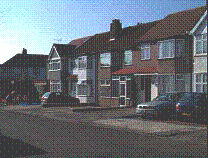 Integrated catchment management (ICM) is essential to cope with climate change and urban creep. The impact of creep is equivalent to climate change, and new development. ICM will require institutional change. The November edition of “The Garden” (the Journal of the Royal Horticultural Society) has two articles about modulation (or lack of it) of urban runoff. The London Assembly published “Crazy paving: the environmental importance of London’s front gardens” http://legacy.london.gov.uk/assembly/reports/environment/frontgardens.pdf which reports that 32 km2 of front gardens in London have been paved (22 times the size of Hyde Park, 5,200 soccer pitches) to provide off-street car parking. The article advocates porous solutions that will enable rain infiltration rather than the flash discharge that happens from concrete or block paving. The article links run-off with stormwater discharges and occasional fish-kills in the Thames (2 in the last 2 years), the cost to water bills and the £2.1bn scheme proposed to cure the problem. It recommends garden design (as you would expect) as a more attractive alternative to boring concrete, etc. that adds value to houses and helps the environment and shows case study examples. The second RHS article is about green-roofs, a traditional Scandinavian roofing technique that is being promoted to improve thermal insulation (cooler in summer and warmer in winter) and modulate rainwater discharge – in some cases the rain remains in the roof root-mat. The article says 43% of German cities offer financial incentives for green-roof construction. It cites the International Green Roof Institute http://www.greenroof.se/ as a source of information. http://www.greenroofs.com/ is another portal on the subject and http://greenroofs.org/boston/ has the programme for the Greening Rooftops for Sustainable Communities Conference May 10-12, 2006 in Boston, MA, USA
Integrated catchment management (ICM) is essential to cope with climate change and urban creep. The impact of creep is equivalent to climate change, and new development. ICM will require institutional change. The November edition of “The Garden” (the Journal of the Royal Horticultural Society) has two articles about modulation (or lack of it) of urban runoff. The London Assembly published “Crazy paving: the environmental importance of London’s front gardens” http://legacy.london.gov.uk/assembly/reports/environment/frontgardens.pdf which reports that 32 km2 of front gardens in London have been paved (22 times the size of Hyde Park, 5,200 soccer pitches) to provide off-street car parking. The article advocates porous solutions that will enable rain infiltration rather than the flash discharge that happens from concrete or block paving. The article links run-off with stormwater discharges and occasional fish-kills in the Thames (2 in the last 2 years), the cost to water bills and the £2.1bn scheme proposed to cure the problem. It recommends garden design (as you would expect) as a more attractive alternative to boring concrete, etc. that adds value to houses and helps the environment and shows case study examples. The second RHS article is about green-roofs, a traditional Scandinavian roofing technique that is being promoted to improve thermal insulation (cooler in summer and warmer in winter) and modulate rainwater discharge – in some cases the rain remains in the roof root-mat. The article says 43% of German cities offer financial incentives for green-roof construction. It cites the International Green Roof Institute http://www.greenroof.se/ as a source of information. http://www.greenroofs.com/ is another portal on the subject and http://greenroofs.org/boston/ has the programme for the Greening Rooftops for Sustainable Communities Conference May 10-12, 2006 in Boston, MA, USA
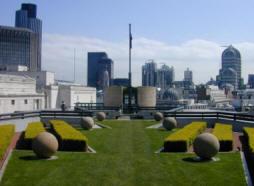
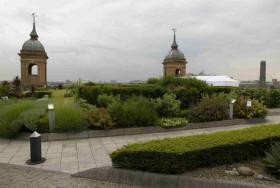
Left: No. 1 Poultry; Right: Cannon Bridge Roof Garden, Liffe Building, over Cannon Bridge Station;
Both Photos are within the City of London, Courtesy of the Corporation of London
Andy Tagg of HR Wallingford Ltd.described SMURF, an EU-funded project, http://www.smurf-project.info/index.html. It was a demonstration for implementing the Water Framework Directive. It was based on the River Tame, West Midlands, UK and aimed to tackle the problems of an urban river heavily polluted by industry and heavily modified by culverting, straightening and re-routing, from which people had turned away owing to pollution and degradation. The Project applied integrated planning and management to: land-use, water quality, ecology and problems of flooding. Local communities were also involved in the catchment planning process.
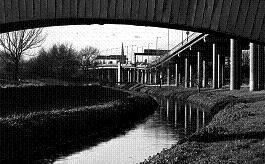
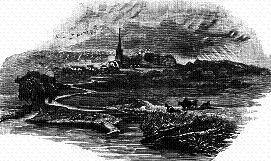
River Tame, now and before the Industrial Revolution
One of the key deliverables produced by HRW was a GIS-based catchment planning system, which includes a comprehensive database, sustainability indicators, and linked hydraulic and water quality models, controlled by a user scenario manager.
The project has been phenomenally successful in terms of the public participation and interest. There have been 60 times more hits on the website than was hoped for in the original project proposal. A very wide range of citizen groups has engaged with the project. They showed very realistic and pragmatic expectations for their rivers. They don’t expect them to be pristine babbling brooks but they would like them to be visible and free from litter and detritus; where possible they would like safe access especially so that children are able to experience their rivers.
Getting access to data was a difficult issue as was ownership of data; for example some owners were only prepared to give limited duration licences to use their data and without them the integrated SMURF system would be compromised. Bringing the disparate datasets together has proved valuable for many aspects including testing the impacts of developments.
An issue of concern was the future of the information. The website is probably assured for 2 years but after that it might be unplugged. This hi-lighted an issue of the internet age that there will be very limited information residual in the public domain in a few years’ time, unlike the hard-copy age where libraries last for centuries.
Tim Evans reported on the 10th European Biosolids & Biowastes Conference & Workshop, 13-16 November 2005 www.european-biosolids.com. The pre-conference workshop "The Art of Selling - Does it apply to Biowaste and Biosolids Products and Engineering Services?” had 6 papers and good discussion. Some people have a genius for selling, some are congenitally incapable of selling but most people can be trained to be quite good. Even an operation that talked a good talk at conferences had a sales team that was woefully ill-equipped lacking even a sales leaflet or a sales interview data-capture form. Selling really is an undervalued skill.
A key question was “how long is the future for biosolids to land?” the concern was stakeholder fears of public attitudes. This has been lurking for several years. Steve Hallam answered that if there are fears about what the public thinks – just ask them. We expect the answer will be favourable (that’s what Surfers Against Sewage found http://www.sas.org.uk/papers/full%20sludge%20project.pdf) if it is we can hit the doubters with objective information. In the unlikely event that it is unfavourable that too is valuable because it demonstrates that there really are aspects that need to be changed or in the worst case that a different strategy has to be implemented, but at least the action can be planned rather than reactive.
There were 220 delegates from all over the world for the conference, 86 papers in 24 sessions of which 3 were plenary and 21 were in 7 parallel sessions. It is a friendly, open interactive conference where delegates are willing to share their successes (of course) and the things that did not go right; by sharing failures, others can avoid repeating them. The hottest topics were:
- Enhancing anaerobic digestion for compliance, more biogas and better dewatering
- Drying, especially avoidance of dust and explosion
Stakeholders appreciate that most water companies are working to the voluntary agreement but they would be more reassured if it had the backing of regulation. For this reason revision of the UK Sludge (use in agriculture) regulations to incorporate the voluntary agreement is vital. It would also be useful to conduct another survey of practice; the last was for operating data for 1996/97, because knowing there is going to be a survey keeps operators sharp.
 Integrated catchment management (ICM) is essential to cope with climate change and urban creep. The impact of creep is equivalent to climate change, and new development. ICM will require institutional change. The November edition of “The Garden” (the Journal of the Royal Horticultural Society) has two articles about modulation (or lack of it) of urban runoff. The London Assembly published “Crazy paving: the environmental importance of London’s front gardens” http://legacy.london.gov.uk/assembly/reports/environment/frontgardens.pdf which reports that 32 km2 of front gardens in London have been paved (22 times the size of Hyde Park, 5,200 soccer pitches) to provide off-street car parking. The article advocates porous solutions that will enable rain infiltration rather than the flash discharge that happens from concrete or block paving. The article links run-off with stormwater discharges and occasional fish-kills in the Thames (2 in the last 2 years), the cost to water bills and the £2.1bn scheme proposed to cure the problem. It recommends garden design (as you would expect) as a more attractive alternative to boring concrete, etc. that adds value to houses and helps the environment and shows case study examples. The second RHS article is about green-roofs, a traditional Scandinavian roofing technique that is being promoted to improve thermal insulation (cooler in summer and warmer in winter) and modulate rainwater discharge – in some cases the rain remains in the roof root-mat. The article says 43% of German cities offer financial incentives for green-roof construction. It cites the International Green Roof Institute http://www.greenroof.se/ as a source of information. http://www.greenroofs.com/ is another portal on the subject and http://greenroofs.org/boston/ has the programme for the Greening Rooftops for Sustainable Communities Conference May 10-12, 2006 in Boston, MA, USA
Integrated catchment management (ICM) is essential to cope with climate change and urban creep. The impact of creep is equivalent to climate change, and new development. ICM will require institutional change. The November edition of “The Garden” (the Journal of the Royal Horticultural Society) has two articles about modulation (or lack of it) of urban runoff. The London Assembly published “Crazy paving: the environmental importance of London’s front gardens” http://legacy.london.gov.uk/assembly/reports/environment/frontgardens.pdf which reports that 32 km2 of front gardens in London have been paved (22 times the size of Hyde Park, 5,200 soccer pitches) to provide off-street car parking. The article advocates porous solutions that will enable rain infiltration rather than the flash discharge that happens from concrete or block paving. The article links run-off with stormwater discharges and occasional fish-kills in the Thames (2 in the last 2 years), the cost to water bills and the £2.1bn scheme proposed to cure the problem. It recommends garden design (as you would expect) as a more attractive alternative to boring concrete, etc. that adds value to houses and helps the environment and shows case study examples. The second RHS article is about green-roofs, a traditional Scandinavian roofing technique that is being promoted to improve thermal insulation (cooler in summer and warmer in winter) and modulate rainwater discharge – in some cases the rain remains in the roof root-mat. The article says 43% of German cities offer financial incentives for green-roof construction. It cites the International Green Roof Institute http://www.greenroof.se/ as a source of information. http://www.greenroofs.com/ is another portal on the subject and http://greenroofs.org/boston/ has the programme for the Greening Rooftops for Sustainable Communities Conference May 10-12, 2006 in Boston, MA, USA


